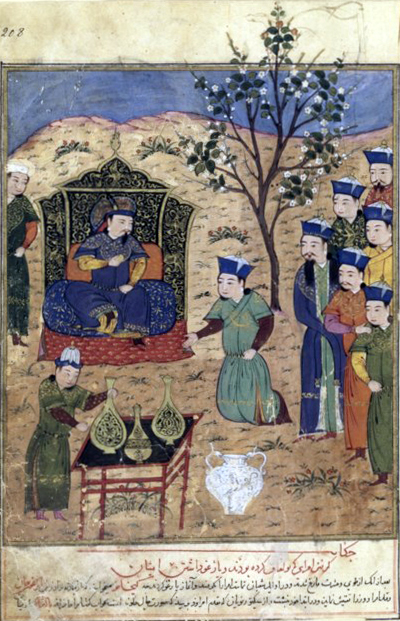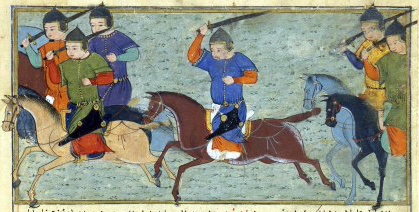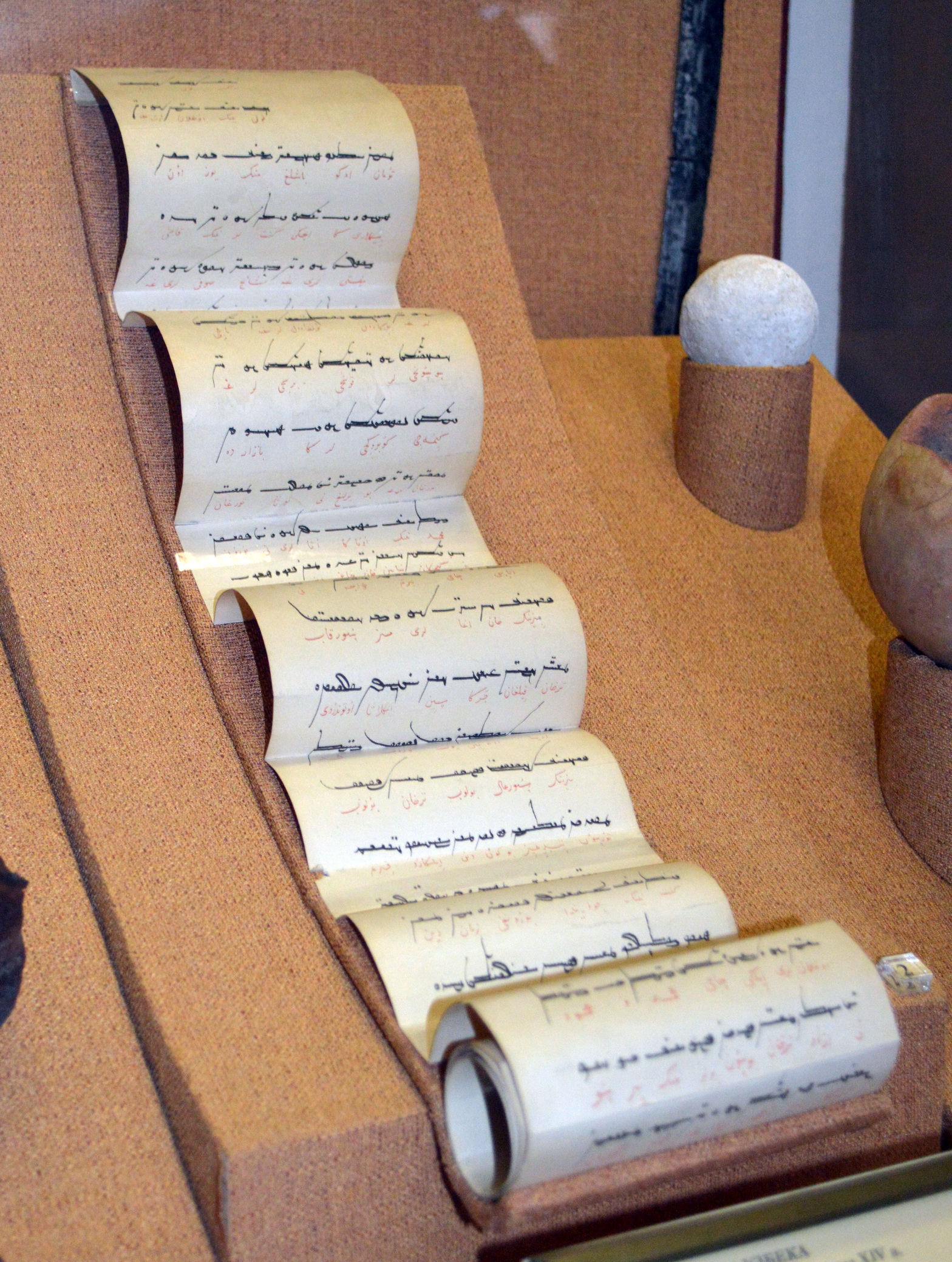|
Kutlugh Turkan
Kutlugh Turkan (c.1208/1213 – 1283), was a ruler of Kirman from 1257 until 1282. Early life Different accounts exist regarding her early life. According to "History of Qara-Khitai Shahs" (''Tāriḵ-e šāhi-e Qarāḵtāʾiān'') by anonymous author, she might have been born in Transoxiana between 1208 and 1213 and later sold as a slave to an Isfahani merchant, who adopter her and raised with excellent education. While other sources talk of her as a concubine to Qiyasaddin Pirshah (son of Muhammad II of Khwarazm), then of Buraq Hajib. Although Fatema Mernissi proposed that she was Buraq Hajib's daughter. She married to Qutb al-Din Mohammad on 5 September 1235, a nephew of Buraq Hajib and his successor. However they were sent to Ögedei's court when Buraq Hajib's son Rukn al-Din Mubarak Khawja (d. 1252) was recognized as the new ruler of Kirman. They returned to Kirman when Qutb al-Din was confirmed as new ruler in December 1252 by Möngke. However, she was widowed in Se ... [...More Info...] [...Related Items...] OR: [Wikipedia] [Google] [Baidu] |
Qutlugh-Khanids
The Qutlugh-Khanids (otherwise known as the Qutlugh-Khanid dynasty, Kirmanid dynasty, or very rarely as the Later Western Liao) was a dynasty of ethnic Khitan origin that ruled over Kirman (in present-day Kerman Province, Iran) from 1222 to 1306. It was founded by Buraq Hajib, who emigrated from the Qara Khitai (Western Liao dynasty) during the collapse of the realm. Originally an independent entity, the Qutlugh-Khanid dynasty subsequently ruled as vassals of the Khwarazmian dynasty, the Mongol Empire and the Ilkhanate. The dynasty was removed from power by the Ilkhanid ruler Öljaitü, who appointed Nasir al-Din Muhammad ibn Burhan as governor of Kirman. Later Western Liao Although there was no mention of a dynasty called the "Later Western Liao" (后西辽) in traditional Chinese scholarship, Wang Zhilai wrote a paper ''On the Later Western Liao'' (关于"后西辽") in 1983, where he proposed to call the Qutlugh-Khanids the "Later Western Liao", thereby positioning the dyn ... [...More Info...] [...Related Items...] OR: [Wikipedia] [Google] [Baidu] |
Möngke Khan
Möngke ( mn, ' / Мөнх '; ; 11 January 1209 – 11 August 1259) was the fourth khagan-emperor of the Mongol Empire, ruling from 1 July 1251, to 11 August 1259. He was the first Khagan from the Toluid line, and made significant reforms to improve the administration of the Empire during his reign. Under Möngke, the Mongols conquered Iraq and Syria as well as the kingdom of Dali (modern-day Yunnan). Appearance According to William of Rubruck, Möngke Khan was a man of medium height. Early life Möngke was born on 11 January 1209, as the eldest son of Genghis Khan's teenaged son Tolui and Sorghaghtani Beki. Teb Tengri Khokhcuu, a shaman, claimed to have seen in the stars a great future for the child and bestowed on him the name Möngke, "eternal" in the Mongolian language. His uncle Ögedei Khan's childless queen Angqui raised him at her orda (nomadic palace). Ögedei instructed Persian scholar Idi-dan Muhammed to teach writing to Möngke. On his way back home after th ... [...More Info...] [...Related Items...] OR: [Wikipedia] [Google] [Baidu] |
1210s Births
1 (one, unit, unity) is a number representing a single or the only entity. 1 is also a numerical digit and represents a single unit of counting or measurement. For example, a line segment of ''unit length'' is a line segment of length 1. In conventions of sign where zero is considered neither positive nor negative, 1 is the first and smallest positive integer. It is also sometimes considered the first of the infinite sequence of natural numbers, followed by 2, although by other definitions 1 is the second natural number, following 0. The fundamental mathematical property of 1 is to be a multiplicative identity, meaning that any number multiplied by 1 equals the same number. Most if not all properties of 1 can be deduced from this. In advanced mathematics, a multiplicative identity is often denoted 1, even if it is not a number. 1 is by convention not considered a prime number; this was not universally accepted until the mid-20th century. Additionally, 1 is the s ... [...More Info...] [...Related Items...] OR: [Wikipedia] [Google] [Baidu] |
1200s Births
1 (one, unit, unity) is a number representing a single or the only entity. 1 is also a numerical digit and represents a single unit of counting or measurement. For example, a line segment of ''unit length'' is a line segment of length 1. In conventions of sign where zero is considered neither positive nor negative, 1 is the first and smallest positive integer. It is also sometimes considered the first of the infinite sequence of natural numbers, followed by 2, although by other definitions 1 is the second natural number, following 0. The fundamental mathematical property of 1 is to be a multiplicative identity, meaning that any number multiplied by 1 equals the same number. Most if not all properties of 1 can be deduced from this. In advanced mathematics, a multiplicative identity is often denoted 1, even if it is not a number. 1 is by convention not considered a prime number; this was not universally accepted until the mid-20th century. Additionally, 1 is the s ... [...More Info...] [...Related Items...] OR: [Wikipedia] [Google] [Baidu] |
Gaykhatu
Gaykhatu (Mongolian script:; ) was the fifth Ilkhanate ruler in Iran. He reigned from 1291 to 1295. His Buddhist baghshi gave him the Tibetan name Rinchindorj () which appeared on his paper money. Early life He was born to Abaqa and Nukdan Khatun, a Tatar lady in c.1259. He was living in Jazira during Tekuder's reign and had to flee to Arghun in Khorasan after Qonqurtai's execution in 1284. He was given as hostage to Tekuder by Arghun as a condition of truce in June 1284 and put in orda of Todai Khatun, his step-mother. After Arghun's enthronement, he was confirmed as governor of Anatolia together with his uncle Hulachu. Rule in Anatolia He was stationed in Erzinjan and learnt to speak Persian and to some degree Turkish during his stay in Anatolia. Gaykhatu ruled Anatolia solely after recall of Hulachu to Iran in 1286. It was then he was married to Padishah Khatun, a princess of Qutlugh-Khanids. He aided Masud II on his campaigns against Turkmen principalities, most importa ... [...More Info...] [...Related Items...] OR: [Wikipedia] [Google] [Baidu] |
Abaqa Khan
Abaqa Khan (27 February 1234 – 4 April 1282, mn, Абаха/Абага хан (Khalkha Cyrillic), ( Traditional script), "paternal uncle", also transliterated Abaġa), was the second Mongol ruler (''Ilkhan'') of the Ilkhanate. The son of Hulagu Khan and Lady Yesünčin and the grandson of Tolui, he reigned from 1265 to 1282 and was succeeded by his brother Ahmed Tekuder. Much of Abaqa's reign was consumed with civil wars in the Mongol Empire, such as those between the Ilkhanate and the northern khanate of the Golden Horde. Abaqa also engaged in unsuccessful attempts at invading Syria, which included the Second Battle of Homs. Life Abaqa was born in Mongolia on 27 February 1234, son of Ilkhanate founder Hulagu Khan. Abaqa was a Buddhist. A favoured son of Hulagu, he was made governor of Turkestan.Runciman, p. 320. Hulagu died from illness in 1265. Before his death, he had been negotiating with the Byzantine Emperor Michael VIII Palaiologos to add a daughter of the Byzantine ... [...More Info...] [...Related Items...] OR: [Wikipedia] [Google] [Baidu] |
Kutlugh-Khanids
The Qutlugh-Khanids (otherwise known as the Qutlugh-Khanid dynasty, Kirmanid dynasty, or very rarely as the Later Western Liao) was a dynasty of ethnic Khitan origin that ruled over Kirman (in present-day Kerman Province, Iran) from 1222 to 1306. It was founded by Buraq Hajib, who emigrated from the Qara Khitai (Western Liao dynasty) during the collapse of the realm. Originally an independent entity, the Qutlugh-Khanid dynasty subsequently ruled as vassals of the Khwarazmian dynasty, the Mongol Empire and the Ilkhanate. The dynasty was removed from power by the Ilkhanid ruler Öljaitü, who appointed Nasir al-Din Muhammad ibn Burhan as governor of Kirman. Later Western Liao Although there was no mention of a dynasty called the "Later Western Liao" (后西辽) in traditional Chinese scholarship, Wang Zhilai wrote a paper ''On the Later Western Liao'' (关于"后西辽") in 1983, where he proposed to call the Qutlugh-Khanids the "Later Western Liao", thereby positioning the dyn ... [...More Info...] [...Related Items...] OR: [Wikipedia] [Google] [Baidu] |
Tekuder
Ahmed Tekuder ( Mongolian: ''Tegülder'', meaning “perfect”; fa, تکودر) (c.1246 10 August 1284), also known as Sultan Ahmad (reigned 1282–1284), was the sultan of the Persian-based Ilkhanate, son of Hulegu and brother of Abaqa. He was eventually succeeded by his nephew Arghun Khan. Early life Tekuder was born c. 1246 in Mongolia to Hulagu and Qutui Khatun from Khongirad tribe as his seventh son. His birth date is not mentioned elsewhere but according to sources he died at age of 37, therefore his birth year must have been around 1246 or 1247. He was baptized in his childhood as a Nestorian Christian and was given name ''Nicholas''. He arrived in the Ilkhanate sometime in 1260s with his mother Qutui and brother Tekshin. Years later, he was granted governorship of Nahavand and Dinavar by Abaqa, who respected his mother Qutui. Qutui was also invested with territories with income of 100.000 gold coins near Mayyafariqin by Abaqa. Conversion to Islam The circumstances of ... [...More Info...] [...Related Items...] OR: [Wikipedia] [Google] [Baidu] |
Qanat
A qanat or kārīz is a system for transporting water from an aquifer or water well to the surface, through an underground aqueduct; the system originated approximately 3,000 BC in what is now Iran. The function is essentially the same across North Africa and the Middle East but the system operates under a variety of regional names: ''qanat'' or kārīz in Iran, ''foggara'' in Algeria, ''khettara'' in Morocco, ''falaj'' in Oman, ''karez'' in Afghanistan, ''auyoun'' in Saudi Arabia, et al. The largest extant and functional qanat systems are located in Iran, Afghanistan, Oman, the oases of Turfan region of China, Algeria, and Pakistan. This is a system of water supply that allows water to be transported over long distances in hot dry climates without loss of much of the water to evaporation. The system has the advantage of being resistant to natural disasters such as earthquakes and floods, and to deliberate destruction in war. Furthermore, it is almost insensitive to the level ... [...More Info...] [...Related Items...] OR: [Wikipedia] [Google] [Baidu] |
Madrasa
Madrasa (, also , ; Arabic: مدرسة , pl. , ) is the Arabic word for any type of educational institution, secular or religious (of any religion), whether for elementary instruction or higher learning. The word is variously transliterated ''Madrasah arifah'', ''medresa'', ''madrassa'', ''madraza'', ''medrese'', etc. In countries outside the Arab world, the word usually refers to a specific type of religious school or college for the study of the religion of Islam, though this may not be the only subject studied. In an architectural and historical context, the term generally refers to a particular kind of institution in the historic Muslim world which primarily taught Islamic law and jurisprudence (''fiqh''), as well as other subjects on occasion. The origin of this type of institution is widely credited to Nizam al-Mulk, a vizier under the Seljuks in the 11th century, who was responsible for building the first network of official madrasas in Iran, Mesopotamia, and Khorasan. ... [...More Info...] [...Related Items...] OR: [Wikipedia] [Google] [Baidu] |
Yarligh
A jarlig ( mn, зарлиг, zarlig; russian: ярлык, ''jarlyk'', also transliterated yarlyk in Russian and Turkic, or even more correctly yarlıq, and the Tatar: yarlığ) is an edict or written commandant of Mongol and Chinggisid rulers' "formal diplomas". It was one of three types of non-fundamental law pronouncements that had the effect of a regulation or ordinance, the other two being ''debter'' (a record of precedence cases for administration and judicial decisions) and ''billing'' (maxims or sayings attributed to Genghis Khan). The jarliq provide important information about the running of the Mongol Empire. Ögedei Khagan prohibited the nobility from issuing gergees (tablet that gave the bearer authority to demand goods and services from civilian populations) and jarliqs in the 1230s. From the mid-13th to mid-15th centuries, all princes of Northeastern Rus received jarliq authorizing their rule. The issuing of jarlyk on governing of Rus finalized the establishm ... [...More Info...] [...Related Items...] OR: [Wikipedia] [Google] [Baidu] |
Delhi Sultanate
The Delhi Sultanate was an Islamic empire based in Delhi that stretched over large parts of the Indian subcontinent for 320 years (1206–1526).Delhi Sultanate Encyclopædia Britannica Following the invasion of by the , five dynasties ruled over the Delhi Sultanate sequentially: the Mamluk dynasty (1206–1290), the Khalji dynasty (1290–1320), the |






